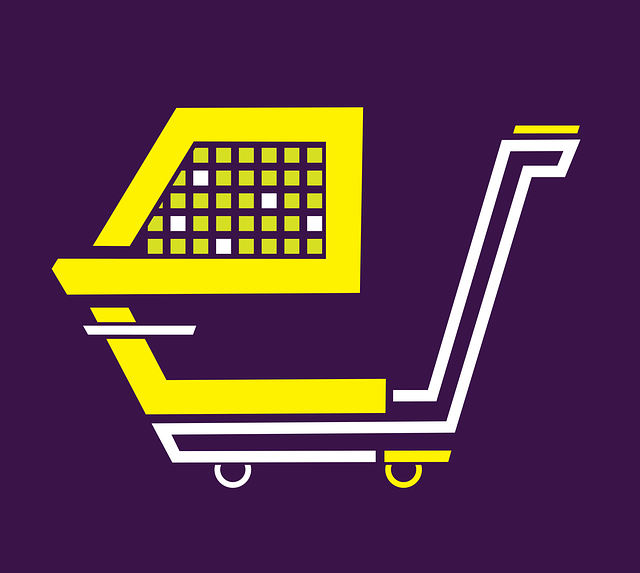Evaluating the success of AI chatbots in e-commerce revolves around tracking Key Performance Indicators (KPIs) like conversation volume, customer satisfaction, conversion rates, average order value, and sales attribution. By analyzing these metrics, businesses can optimize chatbot responses, attribute sales directly to the bot, and identify peak performance times. Calculating Return on Investment (ROI) using KPIs such as increased sales, reduced support load, and improved operational efficiency is vital for strategic decision-making. Continuous optimization and staying agile are crucial for maintaining the effectiveness of best e-commerce chatbots in a dynamic digital environment.
Calculating the return on investment (ROI) for AI chatboards is essential for businesses looking to optimize their customer engagement strategies. This article guides you through the process, focusing on key performance indicators (KPIs) critical for ecommerce success. We’ll explore data collection methods, provide a comprehensive ROI calculation formula, and highlight the long-term benefits of best ecommerce chatbots. By the end, you’ll have the insights needed to make informed decisions and maximize the value of your chatbot investment.
- Understanding Key Performance Indicators (KPIs) for Ecommerce Chatbots
- Data Collection and Analysis for Accurate ROI Calculation
- Formulae and Metrics to Calculate Return on Investment (ROI)
- Measuring Long-term Impact and Continuous Optimization of Best Ecommerce Chatbots
Understanding Key Performance Indicators (KPIs) for Ecommerce Chatbots

Evaluating the success of an AI chatbot, especially in the competitive e-commerce space, requires a clear understanding of Key Performance Indicators (KPIs). These metrics are vital for gauging the bot’s effectiveness and return on investment. For best ecommerce chatbots, KPIs can include conversation volume, where tracking the number of interactions helps identify peak performance times and user engagement trends.
Another critical indicator is customer satisfaction, measured through feedback and sentiment analysis. By understanding customer preferences and pain points, businesses can refine chatbot responses to enhance user experience. Moreover, conversion rates, average order value, and sales attribution are essential for quantifying the direct impact of the chatbot on sales, making it a powerful tool for identifying top-performing best ecommerce chatbots in the market.
Data Collection and Analysis for Accurate ROI Calculation

For businesses utilizing AI Chatbots, particularly in the competitive landscape of e-commerce, understanding Return on Investment (ROI) is paramount to justifying their deployment and making informed strategic decisions. Accurate ROI calculation hinges on robust Data Collection and Analysis processes. This involves gathering comprehensive data on chatbot interactions, including user queries, response times, conversion rates, customer satisfaction scores, and associated costs. Advanced analytics techniques are then employed to interpret these data points, enabling businesses to gauge the bot’s performance against key metrics relevant to their operations, such as increased sales, reduced customer support load, or improved operational efficiency.
Focusing on best ecommerce chatbots, effective data collection strategies ensure that insights are gained from real-world usage scenarios. By analyzing user behavior and preferences revealed through chatbot interactions, businesses can refine their AI Chatbot’s capabilities, enhancing its ability to drive sales and foster customer engagement. This iterative process of data collection and analysis is crucial for optimizing ROI, ultimately ensuring that the best ecommerce chatbots become integral tools in achieving business growth and competitiveness.
Formulae and Metrics to Calculate Return on Investment (ROI)

Calculating the return on investment (ROI) for an AI chatbot, especially in the context of best e-commerce chatbots, involves a thoughtful blend of quantitative and qualitative metrics. The primary formula is ROI = (Net Profit / Total Investment) * 100. For chatbots, net profit includes increased sales, cost savings from reduced customer service load, and enhanced customer satisfaction leading to higher retention rates.
Key performance indicators (KPIs) such as conversion rate, average order value, and customer lifetime value are crucial in this calculation. Metrics like chat volume, response time, and user satisfaction scores also play a significant role. By analyzing these figures, businesses can ascertain the financial and operational impact of their AI chatbot investment, ensuring it delivers tangible benefits that surpass initial setup and maintenance costs.
Measuring Long-term Impact and Continuous Optimization of Best Ecommerce Chatbots

Measuring the long-term impact of AI chatbots is a multifaceted process, especially for e-commerce platforms where customer interactions are dynamic and constantly evolving. Beyond immediate response times and user satisfaction scores, tracking key performance indicators (KPIs) over extended periods offers a more holistic view. Metrics such as repeat purchase rates, average order value, and customer lifetime value can reveal the true potential of best ecommerce chatbots in driving sales growth and fostering customer loyalty. By analyzing these KPIs, businesses gain insights into how chatbots contribute to the overall customer journey, identifying areas where improvements or new strategies might be needed.
Continuous optimization is a vital component of ensuring that best ecommerce chatbots remain effective over time. Regularly reviewing chatbot performance data allows for refining conversational flows, updating knowledge bases, and enhancing natural language processing capabilities. Staying agile and responsive to market trends, consumer behaviors, and competitive landscapes enables these AI assistants to provide more accurate and valuable assistance to customers. This ongoing evolution ensures that the best ecommerce chatbots not only meet but exceed expectations, contributing significantly to e-commerce success in a dynamic digital environment.
Calculating the return on investment (ROI) for AI chatbots, especially in the competitive landscape of e-commerce, is essential for businesses seeking to optimize their customer engagement strategies. By understanding key performance indicators and implementing robust data collection and analysis methods, companies can accurately measure the success of their chatbot implementations. Using specific formulae and metrics, as discussed in this article, allows for a comprehensive evaluation of the long-term impact of best e-commerce chatbots. This includes both immediate effects on sales and customer satisfaction, as well as ongoing improvements based on continuous optimization. Ultimately, mastering ROI calculations enables businesses to make informed decisions, ensuring their AI chatbot investments drive tangible value and remain competitive in the market.
